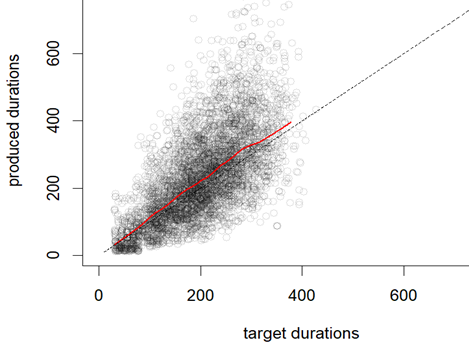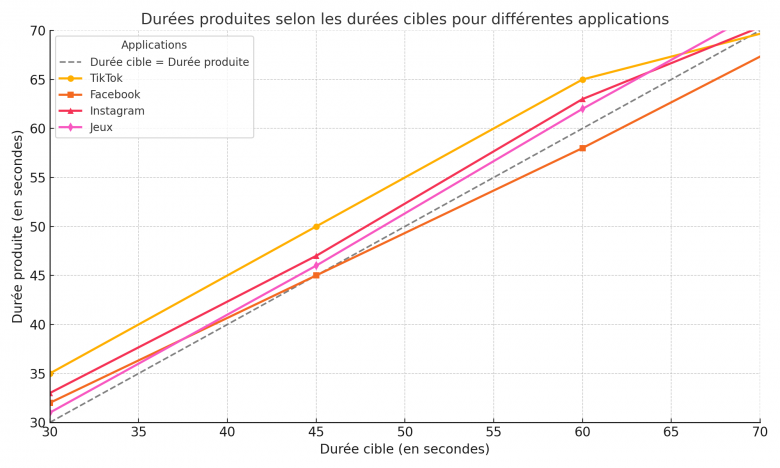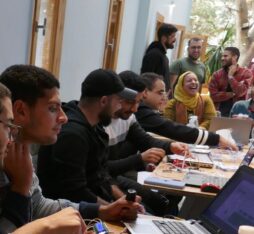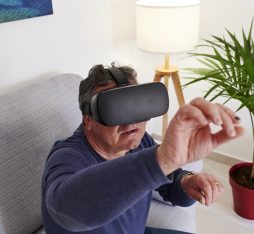• A study with several thousand participants explored why we tend to underestimate this time and the implications of this perception.
• Satisfaction decreases our ability to keep track of time; familiarity allows us to correct this.
Why do we lose track of time when we’re on our screens?
The perception of time is a mental activity; it works through counting and memory comparison and allows us to get organised, giving consistency to the various tasks we perform every day. A warped estimation of time can be related to attentional resource conflicts (cognitive load), emotional influences (stress, boredom etc.), taking psychoactive substances or other factors. Our perception of time therefore seems to depend on internal or external factors.
Some digital activities distort our perception of time, making it more difficult to manage them.
For example, captivating tasks like watching short videos or playing games require a lot of attention, which reduces our ability to assess how much time has passed. Emotions also make it difficult to estimate time elapsed, not to mention the reward circuit (dopamine) being frequently activated, which we will not describe in this study.
This trend is even stronger as the apps are specifically designed to keep our attention. Powerful algorithms analyse our preferences and offer content that is constantly more tailored, thereby increasing our engagement. This increased personalisation can lead to genuine immersion, in which time references are lost entirely, called “doomscrolling”.
What does the study say?
A survey of more than 5000 participants confirmed, under experimental conditions, that certain apps, such as TikTok or social media apps, are particularly conducive to underestimating time spent. These participants were part of the “Le Lab” panel, a collaborative innovation programme and a sharing environment involving Orange and around 15,000 volunteers to test new digital applications and participate in research. Here, the test consisted of using different common smartphone applications whilst trying to meet a predefined target duration.
The first graph shows the dispersal of the durations logged by the participants in relation to the cumulative target durations:

The dotted line represents the ideal line where the duration logged exactly matches the target duration. We can see that, overall, the durations logged are on average in line with the target durations. However, the spread of the points increases as the target duration becomes longer. This result is in accordance with scalar expectancy theory, which works on the basis that time perception is based on two properties: the relative accuracy property and the scalar property itself. On the one hand, the relative accuracy property corresponds to the fact that the temporal estimates (subjective time = t) of a real time (objective time = T) are accurate, meaning that t = bT + a. In this property, b and a are the constants of a linear function. The scalar property, on the other hand, corresponds to the fact that the variability of subjective time increases proportionally with the mean of the time estimates.
The second graph illustrates the differences between objective time (target duration) and subjective time (duration achieved) depending on the app:

The lines show how the durations logged (on the y-axis) compare to the target durations (on the x-axis). In particular, we can see:
- For TikTok (yellow line), the durations logged are often longer than the target durations. This indicates an underestimation of time. TikTok, with its continuous stream of captivating content, strongly captures attention, making it difficult to properly assess the amount of time elapsed.
- For Facebook (orange line), the durations logged are closer to the dotted line and appear to be better estimated. This can be explained by the fact that Facebook is the app the study participants are most familiar with (see below), which reduces the cognitive load needed to browse this platform.
- For Instagram, the durations logged are also longer than the target durations. It is also noted, in the detailed results, that these were often based on the duration of Stories rather than on the suggested target, demonstrating the power of this type of format. (At the time of the test, the app still limited Stories to 15 seconds.)
These observations show the value of accurately distinguishing the activities that make up screen time before discussing how to reduce it.
Satisfaction plays a key role
To try to explain the differences in their estimations of time spent, participants were asked to describe their use of the apps: Were they familiar with them? Did they like using them? Analysing this data showed that emotions and normal usage strongly influenced their perception of time:
- The more fun an activity is, the faster time passes. This can be explained by increased concentration on the activity, rather than on time. The more attention we pay to something other than time, the shorter the time seems to us.
- Familiarity improves our estimation of time. When we use apps that we know well, it uses less mental effort, therefore less attention is being spent on doing the task and more is spent on our estimation of time, which improves our ability to assess the duration.
What are the implications for Orange?
As a trusted carrier, Orange plays a key role in digital education. This study provides concrete examples to enrich educational initiatives dedicated to this subject. It will therefore be able to add to the “Protect your children on the Internet” workshop by integrating the explanatory mechanisms that help us to manage the scarce resource that is time.
Regaining control of our time
Being aware of these biases can help us to better manage our time spent on screens. For example, time tracking tools on smartphones are a good start, but better understanding the mechanisms at play could allow us to go further.
Remember: Our emotions, level of attention and the type of activities influence our perception of time. In this experiment, the TikTok app, and to a lesser extent Instagram, distorted the perception of time more than an “older” app like Facebook. This app, with which the testers reported they were more familiar, appears better “controlled” and the perception of time spent on it is better as well.
Among the factors studied, the importance of familiarity shows that an educational approach is possible, even for engaging apps such as social media. An in-depth study focusing on teenagers could more precisely identify the factors of mental adaptation involved in the challenge that screens pose to younger generations’ attention spans. Finally, the study also showed that testers were generally aware of their estimation errors (a metacognition phenomenon): Even when you’re caught up in it, you’re not fooled!
Read more :
Josset, J., Le Quentrec, E., & van Wassenhove, V. (2024). Our sweetest hours fly fastest…on smartphone. Proceedings of the Annual Meeting of the Cognitive Science Society, 46.











